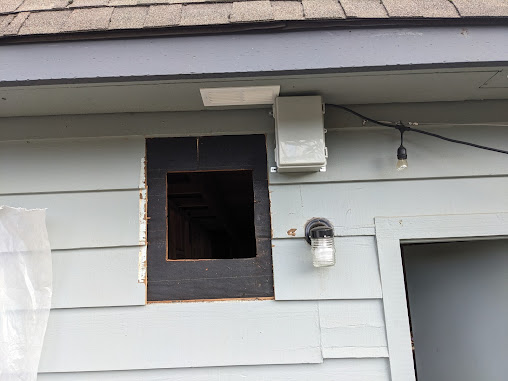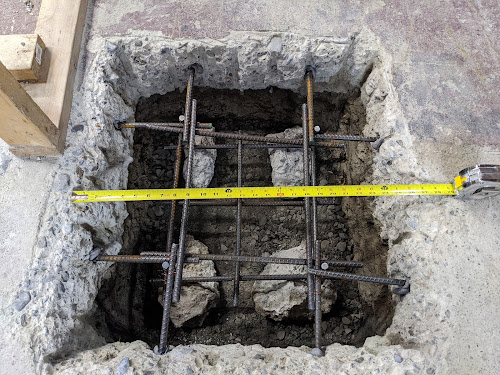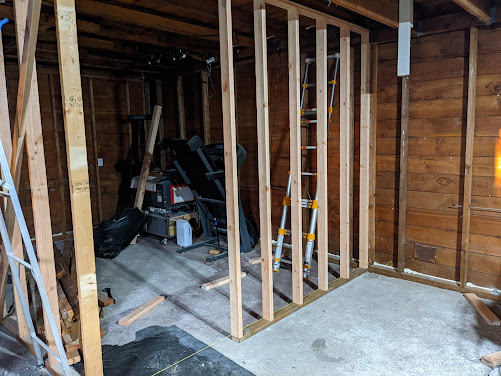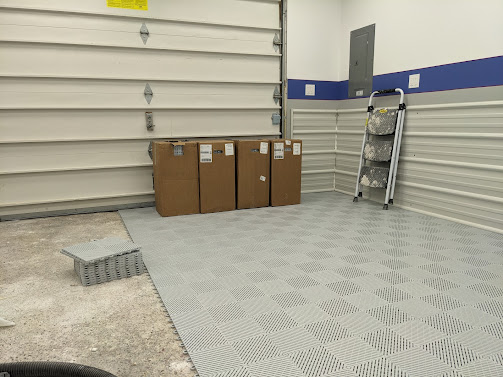This is a cedar compost bin using non-galvanized exterior screws.
It's approximately 2'x2'x2' and holds about 60 gallons. Common designs online show a lower door for extracting the processed compost, so I've included it with a lock to keep out pests. Purchasing the wood and hardware new from the big box store was about $200, which is a bit over half the cost of a premade cedar bin.
The gaps are 1/8-inch to prevent mice from fouling the mix.
Parts and dimensions for the design I came up with.
All 42 planks made with the miter saw using a makeshift 2-foot guide to speed through cutting.









































































